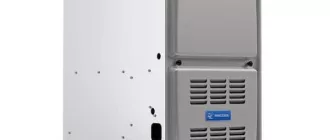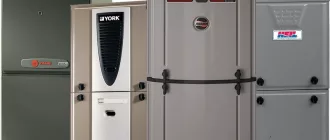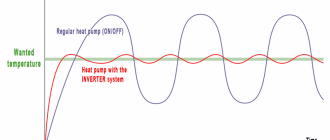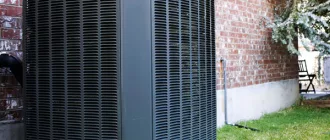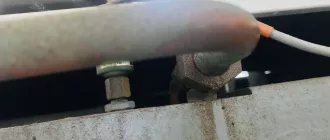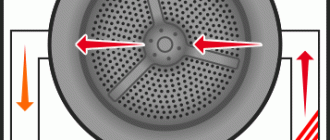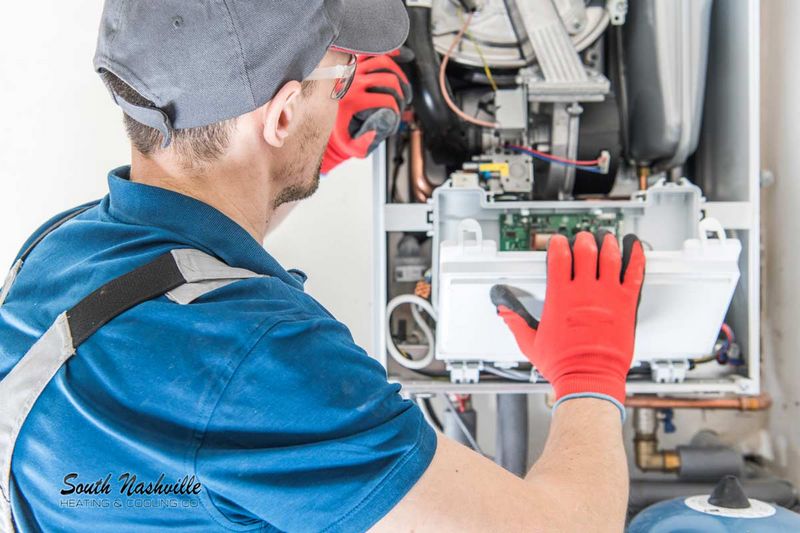
Get Your Furnace in Shape Before Winter Hits
Winter is just around the corner, and it’s time to start thinking about preparing your furnace for the cold months ahead. Don’t wait until the last minute, take action now to ensure your furnace is running smoothly and efficiently all winter long.
Why is furnace maintenance important?
Regular furnace maintenance is essential to keep your heating system operating at its best. It helps prevent breakdowns, saves energy, and extends the lifespan of your furnace. By properly maintaining your furnace, you’ll also enjoy better indoor air quality and lower utility bills.
Here are a few expert tips to help you get your furnace ready for winter:
- Clean or replace the air filter: A dirty air filter can restrict airflow and decrease your furnace’s efficiency. Clean or replace the filter regularly to ensure proper airflow and improve indoor air quality.
- Check thermostat settings: Make sure your thermostat is set to the desired temperature and functioning correctly. Consider upgrading to a programmable thermostat to save energy and money.
- Inspect and clean the blower motor: The blower motor is responsible for distributing heated air throughout your home. Inspect and clean it to ensure optimal performance and airflow.
- Check for leaks and cracks: Inspect your furnace and ductwork for any leaks or cracks that could cause energy loss. Seal any gaps to improve efficiency and prevent drafts.
- Schedule a professional inspection: Hiring a professional HVAC technician to inspect your furnace is a smart investment. They can identify potential issues and perform necessary maintenance to keep your furnace running smoothly.
Don’t let the winter chill catch you off guard. Take the necessary steps to prepare your furnace now, and you’ll be able to enjoy a cozy and comfortable home all winter long.
Why Furnace Maintenance Matters
Furnace maintenance is essential for ensuring the efficient and safe operation of your heating system during the winter months.
Regular maintenance can help:
- Prolong the lifespan of your furnace: Just like any other mechanical equipment, regular maintenance can help prevent breakdowns and extend the lifespan of your furnace.
- Save energy and reduce utility bills: A well-maintained furnace operates more efficiently, which can lower your energy consumption and save you money on your heating bills.
- Improve indoor air quality: Dirty or clogged furnace filters can lead to poor indoor air quality. Regular maintenance, including filter cleaning or replacement, can help ensure clean and healthy air circulation in your home.
- Enhance safety: Furnaces that are not properly maintained can pose a risk of carbon monoxide leaks or other safety hazards. Regular maintenance can identify and address any potential issues, ensuring your family’s safety.
What does furnace maintenance include?
Furnace maintenance typically involves:
- Inspecting and cleaning the blower motor, burners, and heat exchanger.
- Checking and adjusting the thermostat settings.
- Testing the ignition system and safety controls.
- Examining and cleaning the air filters.
- Inspecting and lubricating moving parts.
- Checking and cleaning the condensate drain lines.
- Measuring the gas pressure and ensuring proper combustion.
Why hire a professional for furnace maintenance?
While some furnace maintenance tasks can be done by homeowners, it is recommended to hire a professional HVAC technician for a thorough inspection and servicing. A professional technician has the knowledge and experience to identify any hidden issues, perform necessary repairs, and ensure that your furnace is running efficiently and safely.
Don’t neglect furnace maintenance!
Regular furnace maintenance is crucial for a comfortable and safe winter season. Don’t wait until the cold weather arrives—schedule a professional maintenance service today to keep your furnace in optimal condition.
Benefits of Regular Furnace Maintenance
Regular furnace maintenance is essential to ensure the optimal performance and longevity of your heating system. Here are some key benefits of scheduling regular maintenance for your furnace:
- Improved Energy Efficiency: Regular maintenance helps to keep your furnace running smoothly and efficiently. This can result in lower energy consumption and reduced heating costs.
- Enhanced Comfort: A well-maintained furnace will provide consistent heat throughout your home, ensuring maximum comfort during the winter months.
- Extended Lifespan: By addressing minor issues and performing routine maintenance, you can help prolong the lifespan of your furnace, saving you money on costly repairs or replacement in the long run.
- Enhanced Safety: Regular maintenance includes inspecting the furnace for any potential safety hazards, such as gas leaks or carbon monoxide leaks. By addressing these issues early on, you can prevent potentially dangerous situations and protect your family.
- Optimal Air Quality: A well-maintained furnace ensures clean and healthy indoor air quality by regularly cleaning or replacing the air filters. This is particularly important for individuals with respiratory conditions or allergies.
- Improved Performance: Regular maintenance includes cleaning and lubricating key components of the furnace, which can help improve its overall performance and prevent breakdowns when you need it most.
- Cost Savings: Investing in regular maintenance can help you save money in the long run. By preventing major issues or breakdowns, you can avoid costly emergency repairs and potential replacement expenses.
Overall, regular furnace maintenance is an investment that offers numerous benefits, including improved energy efficiency, enhanced comfort, extended lifespan, enhanced safety, better air quality, improved performance, and cost savings. Don’t neglect the maintenance needs of your furnace – schedule regular maintenance today!
Ensuring Efficient Heating for Winter
As the cold winter months approach, it’s important to make sure your furnace is working efficiently to keep your home warm and cozy. Here are some expert tips and maintenance steps to ensure your heating system is ready for the winter season:
- Clean or Replace Air Filters: Dirty air filters can restrict airflow and reduce the efficiency of your furnace. Clean or replace them regularly to ensure proper airflow and energy efficiency.
- Check Thermostat Settings: Make sure your thermostat is set to the desired temperature and is functioning correctly. Consider upgrading to a programmable thermostat for more precise temperature control and energy savings.
- Inspect Ductwork: Check for any leaks, gaps, or damage in the ductwork, as these can cause heat loss and decreased efficiency. Seal any leaks and insulate the ducts to improve heating efficiency.
- Keep Vents Clear: Ensure that furniture, rugs, or other objects are not obstructing the vents. Blocked vents can restrict airflow and reduce heating efficiency.
- Schedule Professional Maintenance: Regular professional maintenance can keep your furnace running efficiently and help identify any potential issues before they become major problems. Schedule an annual inspection and tune-up with a qualified HVAC technician.
By following these expert tips and performing regular maintenance, you can ensure that your furnace is operating efficiently and effectively throughout the winter season. Stay warm and save on energy costs by taking care of your heating system!
Preparing Your Furnace for Winter
Is your furnace ready for the cold winter months? Ensure your home stays warm and cozy by following these expert tips and essential maintenance steps to prepare your furnace for winter.
1. Schedule a Professional Inspection
Before winter arrives, it’s crucial to schedule a professional inspection for your furnace. A certified technician will thoroughly assess your system, checking for any potential issues or needed repairs. This will ensure your furnace runs efficiently throughout the winter season.
2. Change the Air Filter
Regularly changing the air filter is one of the easiest and most effective ways to optimize your furnace’s performance. A clean filter will allow for better airflow and prevent dust and debris from clogging the system. Check your filter monthly and replace it as needed.
3. Clean the Vents and Ducts
Clean vents and ducts can significantly improve your furnace’s performance. Remove any obstructions, such as dust, dirt, or debris, from vents and ducts to ensure proper airflow. Consider hiring a professional duct cleaning service for a thorough clean and better indoor air quality.
4. Inspect and Seal Ductwork
Inspect the ductwork for any leaks or gaps that may lead to heat loss. Seal any cracks or openings using high-quality duct tape or professional-grade sealant. Properly sealed ductwork will prevent energy waste and keep your home warm and comfortable.
5. Test Carbon Monoxide Detectors
Carbon monoxide is a silent and hazardous gas that can leak from malfunctioning furnaces. Ensure your carbon monoxide detectors are in good working condition by testing them regularly. Replace batteries and sensors as needed for reliable protection.
6. Upgrade to a Programmable Thermostat
A programmable thermostat can help you optimize your furnace’s energy usage. Set your desired temperature levels for different times of the day, allowing your furnace to automatically adjust and save energy when you’re not home. Consider upgrading to a smart thermostat for even more convenience and energy savings.
7. Stock up on Furnace Filters and Safety Devices
Be prepared for any unexpected issues by stocking up on furnace filters and safety devices such as smoke alarms and fire extinguishers. Having these essential items on hand ensures you can quickly address any potential problems and keep your home safe.
By following these expert tips and performing regular maintenance, you can ensure your furnace is ready to tackle the winter season. Stay warm, comfortable, and worry-free throughout the colder months with a well-prepared furnace.
Clean or Replace Air Filters
Proper maintenance of your furnace includes regularly cleaning or replacing air filters.
Air filters help to remove dust, pollen, and other airborne particles from the air in your home. Over time, these filters can become dirty and clogged, reducing the efficiency of your furnace and potentially causing damage to the system.
To ensure optimal performance and extend the lifespan of your furnace, it is recommended to clean or replace air filters every 1-3 months, depending on the level of usage and the quality of the air in your home.
Here are a few steps to clean or replace air filters:
- Turn off the furnace: Before removing the air filter, make sure to turn off the furnace to prevent any accidents or damage.
- Locate the air filter: The air filter is usually located near the blower motor or inside the return air duct. Refer to your furnace’s manual for specific instructions.
- Remove the air filter: Carefully remove the air filter from its housing. If it’s a disposable filter, simply replace it with a new one. If it’s a washable filter, follow the manufacturer’s instructions for cleaning.
- Clean or replace the air filter: If you have a disposable filter, throw away the old filter and replace it with a new one of the same size and type. If you have a washable filter, clean it using mild soap and water, let it dry completely, and then reinstall it.
- Check for proper installation: Make sure the air filter is properly installed and fits securely in the housing. An improperly installed filter can restrict airflow and reduce the efficiency of the furnace.
- Turn on the furnace: After cleaning or replacing the air filter, turn on the furnace and ensure it is functioning properly.
By regularly cleaning or replacing air filters, you can improve indoor air quality, prevent system malfunctions, and save energy by allowing your furnace to operate more efficiently.
For professional assistance with furnace maintenance and filter replacement, contact our HVAC experts today!
Check and Clean Vents and Ducts
To ensure your furnace is running efficiently and effectively, it’s important to regularly check and clean your vents and ducts. Over time, these can become clogged with dirt, dust, and debris, causing your furnace to work harder and potentially leading to poor indoor air quality. Here are a few steps you can follow to check and clean your vents and ducts:
- Start by visually inspecting all of your vents and ducts throughout your home. Look for any signs of blockages, such as dirt or dust buildup.
- Next, use a flashlight to check inside each vent for any visible debris or obstructions. If you notice any, carefully remove it using a vacuum cleaner or a brush specifically designed for cleaning vents.
- If your vents have removable covers, take them off and clean them thoroughly with warm soapy water. Be sure to rinse and dry them completely before reattaching.
- For duct cleaning, it’s best to hire a professional HVAC technician who has the necessary equipment to thoroughly clean the entire system. They can use specialized tools and techniques to remove any built-up dirt, dust, or mold that may be present.
- Consider installing air filters or purifiers to further improve indoor air quality and reduce the accumulation of debris in your vents and ducts.
By regularly checking and cleaning your vents and ducts, you can help maintain proper airflow, improve the efficiency of your furnace, and ensure cleaner air in your home. Don’t forget to schedule regular professional maintenance as well to keep your furnace in top shape throughout the winter season.
Inspect and Lubricate Moving Parts
Regular inspection and lubrication of your furnace’s moving parts is important to ensure smooth and efficient operation during the winter months. Here are some expert tips to help you get started:
- Turn off power: Before inspecting or lubricating any moving parts, make sure to turn off the power to your furnace. This will help prevent any accidents or injuries.
- Clean the parts: Use a soft brush or cloth to remove any dirt, dust, or debris from the moving parts. Buildup can affect their performance and cause unnecessary wear and tear.
- Check for wear: Examine the belts, pulleys, and bearings for any signs of wear or damage. Replace any worn-out or damaged parts to avoid potential malfunctions or breakdowns.
- Apply lubrication: Using a lubricant recommended by the manufacturer, apply a small amount to the moving parts. This will help reduce friction and extend the lifespan of the components.
- Tighten loose connections: Check for any loose bolts, nuts, or screws on the moving parts. Tighten them if necessary to ensure a secure and stable operation.
By regularly inspecting and lubricating the moving parts of your furnace, you can help prevent costly repairs and maintain optimal performance throughout the winter season. If you are unsure or uncomfortable performing these tasks yourself, it is recommended to consult a professional HVAC technician. They have the knowledge and expertise to handle any maintenance or repairs that your furnace may need.
Test Thermostat and Calibration
One of the most important steps in preparing your furnace for winter is testing the thermostat and ensuring it is properly calibrated. The thermostat is responsible for regulating the temperature in your home, so it is crucial that it is functioning correctly.
To test your thermostat, start by setting it to the “heat” mode and increasing the temperature slightly. Wait for a few minutes and see if you can hear your furnace turning on. If it doesn’t turn on, it may indicate a problem with your thermostat.
If your furnace does turn on, you should also check if the temperature matches the reading on the thermostat. You can do this by using a separate thermometer and comparing the two readings. If there is a significant difference, it may be a sign that your thermostat needs calibration.
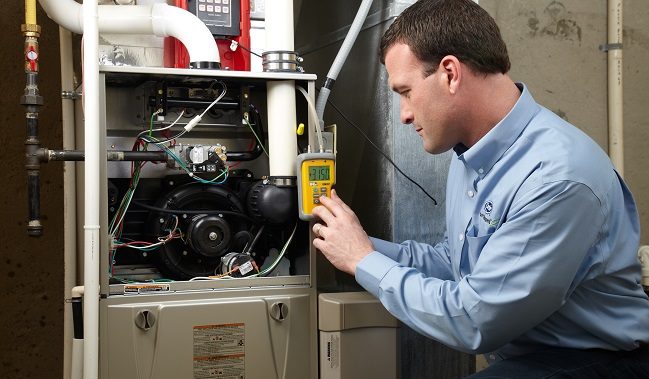
Calibrating the thermostat is a relatively simple process that can be done with the help of your furnace’s user manual. It usually involves removing the thermostat’s cover and adjusting the calibration screws or switches. Be sure to follow the instructions provided by the manufacturer to ensure proper calibration.
By testing your thermostat and calibrating it if necessary, you can ensure that your furnace operates efficiently and keeps your home warm throughout the winter months.
Check and Clean Blower Motor
One important step in preparing your furnace for winter is to check and clean the blower motor. The blower motor is responsible for distributing warm air throughout your home, so it’s crucial to ensure it is in good working condition.
To check the blower motor, first turn off the power to your furnace. Locate the blower motor, which is usually housed in a metal cabinet. Remove the access panel to gain access to the motor.
Inspect the blower motor for any signs of damage or wear. Look for loose wires, bent blades, or excessive dirt and debris. If you notice any issues, it’s best to contact a professional HVAC technician to make any necessary repairs.
Next, use a soft brush or vacuum cleaner to clean the blower motor and its surrounding area. Gently remove any dust, dirt, or debris that may have accumulated over time. This will help improve the efficiency of your furnace and prevent any airflow restrictions.
After cleaning the blower motor, replace the access panel and restore power to your furnace. Test the blower motor by turning on your furnace and feeling for warm air coming out of the vents. If you notice any unusual noises or a lack of airflow, it’s important to address these issues promptly to avoid further damage.
Regularly checking and cleaning your blower motor can help ensure your furnace operates efficiently and effectively throughout the winter season. Consider scheduling professional maintenance at least once a year to keep your furnace in optimal condition.
Inspect Heat Exchanger for Cracks
One crucial step in preparing your furnace for winter is inspecting the heat exchanger for any cracks. A heat exchanger is a vital component of your furnace that helps transfer heat from the combustion chamber to the air being circulated throughout your home. Over time, the heat exchanger can develop cracks due to age, wear and tear, or improper maintenance.
Why is inspecting the heat exchanger important?
- A cracked heat exchanger can lead to carbon monoxide leaks, a dangerous and potentially deadly gas. Carbon monoxide is odorless and colorless, making it impossible to detect without proper equipment.
- Cracks in the heat exchanger can affect the efficiency of your furnace, leading to higher energy bills and discomfort in your home.
- Inspecting the heat exchanger allows you to identify any potential issues early on and take necessary steps to repair or replace it before the winter season.
How to inspect the heat exchanger:
- Turn off the power to your furnace.
- Remove the access panel to expose the heat exchanger.
- Use a flashlight to carefully examine the heat exchanger for any visible cracks or signs of damage.
- If you notice any cracks, it is best to call a professional HVAC technician to assess the situation and determine the best course of action.
Preventing heat exchanger damage:
- Regularly schedule professional furnace maintenance to ensure the heat exchanger is in good condition.
- Change your furnace filter regularly to prevent debris buildup and airflow restriction that can contribute to heat exchanger damage.
- Keep the area around your furnace clean and free from clutter to reduce the risk of damage to the heat exchanger.
By regularly inspecting and maintaining your furnace’s heat exchanger, you can ensure optimal performance, energy efficiency, and the safety of your home during the winter months.
Clean and Check Ignition System
A clean and properly functioning ignition system is essential for the efficient and safe operation of your furnace during the winter months. Ignition systems can become clogged or damaged over time, leading to issues such as delayed ignition or even complete failure to ignite.
Here are some key steps to clean and check your furnace’s ignition system:
- Turn off the power: Before performing any maintenance on your furnace, make sure to turn off the power to prevent any accidents.
- Remove the access panel: Locate the access panel on your furnace and remove it to gain access to the ignition system.
- Inspect the ignition assembly: Carefully inspect the ignition assembly for any signs of dirt, debris, or damage. Use a flashlight to get a clear view. If you notice any issues, it might be necessary to clean or replace parts.
- Clean the ignition system: Use a soft brush or compressed air to gently remove any dirt or debris from the ignition assembly. Be careful not to damage any fragile components.
- Check the ignition sensor: Check the condition and positioning of the ignition sensor. It should be properly aligned and free from dirt or corrosion. Clean with a cloth or replace if necessary.
- Reassemble and test: Once the ignition system is clean and in good condition, reassemble the access panel and restore power to the furnace. Test the ignition system to ensure it is working properly.
Regularly cleaning and checking the ignition system of your furnace can help prevent issues and ensure its reliable performance throughout the winter season. However, if you are unsure or uncomfortable performing these tasks, it is always recommended to seek professional help from a licensed HVAC technician.
Safety Precautions for Furnace Maintenance
When it comes to maintaining your furnace, safety should always be a top priority. Follow these important safety precautions to ensure a safe and successful maintenance process:
- Turn off the Power: Before starting any maintenance tasks, make sure to turn off the power to your furnace. This will help prevent any electrical accidents.
- Use Protective Gear: Wear appropriate safety gear such as gloves, goggles, and a dust mask to protect yourself from any potential hazards, including dust, debris, and chemicals.
- Clean and Clear the Area: Before you begin working on your furnace, clear any clutter or objects around the area to create a safe and accessible workspace.
- Avoid Open Flames: Never use open flames or smoking materials near your furnace. Gas leaks can occur and lead to dangerous situations. If you smell gas, leave your home immediately and contact a professional.
- Inspect for Carbon Monoxide: Install and regularly check carbon monoxide detectors near your furnace. Carbon monoxide is a silent killer, and detecting it early can save lives.
- Follow Manufacturer’s Instructions: Always refer to the manufacturer’s instructions for maintenance procedures and safety guidelines specific to your furnace model. This will ensure that you are following the correct steps and using the right tools.
- Hire a Professional: If you are unsure about any aspect of furnace maintenance or repairs, it is best to hire a professional HVAC technician. They have the expertise and knowledge to safely handle any issues.
By following these safety precautions, you can ensure a safe and effective furnace maintenance routine that will keep your furnace running efficiently throughout the winter season.
Turn off Power and Gas
Before starting any maintenance on your furnace, make sure to turn off the power and gas to ensure your safety. Here are the steps you should follow:
- Turn off the power: Locate the power switch on your furnace and switch it off. This will prevent any electrical accidents while you work on your furnace.
- Turn off the gas: Locate the gas valve near your furnace and turn it to the “off” position. This will prevent any gas leaks or accidents while you work on your furnace.
- Confirm power and gas are off: Once you have turned off the power and gas, double-check to ensure they are both off. You can do this by checking that the furnace is no longer running and by listening for any gas flow.
By turning off the power and gas before starting your furnace maintenance, you can ensure your safety and avoid any potential accidents. Always prioritize safety when working with your furnace.
Wear Protective Gear
When performing maintenance or repairs on your furnace, it is important to prioritize your safety. Wearing the proper protective gear can help prevent accidents and injuries. Here are some recommended protective equipment:
- Gloves: Protect your hands from sharp edges and hot surfaces by wearing heat-resistant gloves.
- Safety Glasses: Shield your eyes from dust, debris, and potential sparks with safety glasses.
- Respirator Mask: Reduce your exposure to dust, fumes, and harmful particles by wearing a respirator mask.
- Protective Clothing: Wear long-sleeved shirts, pants, and closed-toe shoes to protect your skin from burns and cuts.
Remember, safety should always be your top priority when working on your furnace. By wearing the appropriate protective gear, you can ensure a safer and more efficient maintenance process.
Check for Gas Leaks
Ensuring the safety of your home and family should be a top priority, especially when it comes to your furnace. Checking for gas leaks is an essential step in maintaining a well-functioning heating system. Here are some expert tips on how to do it:
- Use a Gas Leak Detector: Invest in a reliable gas leak detector that can quickly identify any gas leaks in your home. Make sure to follow the manufacturer’s instructions for proper usage.
- Inspect Gas Lines: Visually inspect the gas lines connected to your furnace for any signs of damage or corrosion. If you notice any issues, contact a professional to repair or replace the damaged parts.
- Listen for Unusual Sounds: Pay attention to any hissing or whistling sounds near your furnace, as they could indicate a gas leak. If you hear such sounds, turn off your furnace immediately and call a qualified technician.
- Check for Sulfur Smell: Natural gas is odorless, but an additive called mercaptan is added to give it a distinctive smell similar to rotten eggs. If you detect this smell in your home, there may be a gas leak. Evacuate your home immediately and contact your gas supplier or emergency services.
- Install Carbon Monoxide Detectors: Carbon monoxide (CO) is an odorless and deadly gas that can be produced by a malfunctioning furnace. Install CO detectors near your furnace and in other areas of your home to ensure early detection of any leaks.
Remember, if you suspect a gas leak or encounter any issues with your furnace, always seek professional help. Regular maintenance and proper precautions are crucial for keeping your furnace running efficiently and safely throughout the winter season.
When to Call a Professional
- If your furnace is not producing any heat, despite having a known working thermostat, it is time to call a professional. This could indicate a problem with the furnace’s ignition system, gas supply, or electrical connections.
- When you notice unusual noises coming from your furnace, such as banging, squeaking, or rattling, it is best to have a professional inspect it. These noises could indicate a mechanical issue or a loose component that needs to be addressed.
- If you detect a strong smell of gas or a burning odor when your furnace is running, it is essential to stop using it immediately and contact a professional. These odors could be a sign of a gas leak or an overheating furnace, which pose serious safety risks.
- When your furnace is constantly cycling on and off, or if it cannot maintain a consistent temperature throughout your home, it may be a sign of a malfunctioning thermostat or a problem with the furnace itself. A professional can diagnose and resolve the issue for you.
- If you notice any signs of carbon monoxide poisoning, such as dizziness, nausea, headaches, or confusion, it is crucial to evacuate your home and contact emergency services. Carbon monoxide is a silent and deadly gas that can be produced by a malfunctioning furnace, and professional assistance must be sought immediately.
Remember, attempting to fix complex furnace issues on your own can be dangerous and may cause further damage. It is always recommended to contact a qualified HVAC professional to ensure the safety and proper functioning of your furnace.
Signs Your Furnace Needs Professional Help
- Strange or unusual noises coming from your furnace
- Inconsistent or weak airflow
- Frequent cycling on and off
- Inaccurate thermostat readings
- Uneven heating throughout your home
- Noticeable increase in energy bills
- Strong odors coming from the furnace
- Visible signs of soot or rust
- Furnace is more than 15 years old
If you notice any of these signs, it’s important to seek professional help for your furnace. Attempting to fix or maintain your furnace without proper knowledge and experience can be dangerous and may lead to further damage. A qualified technician will be able to diagnose the issue and provide the necessary repairs or maintenance to ensure your furnace is running efficiently and safely.
The Importance of Professional Inspection
While regular maintenance is essential for keeping your furnace running efficiently and prolonging its lifespan, it’s equally important to have your furnace professionally inspected. Here are a few reasons why professional inspection is crucial:
- Safety: A professional inspection ensures that your furnace is running safely and doesn’t pose any risks. They will check for any gas leaks, carbon monoxide leaks, or other potential hazards.
- Efficiency: A professional inspection can identify any issues that may be affecting the efficiency of your furnace. This includes checking the air filters, cleaning the burners, and making sure the system is properly calibrated.
- Cost Savings: Identifying and fixing minor issues during a professional inspection can prevent them from turning into major and costly repairs down the line. Regular inspections can also help extend the lifespan of your furnace, saving you money on a premature replacement.
- Warranty: Some furnace warranties require regular professional inspections to remain valid. By having your furnace inspected by a professional, you can ensure that you are complying with the warranty terms and protecting your investment.
Overall, a professional inspection is a crucial step in maintaining the safety, efficiency, and longevity of your furnace. Don’t wait for a breakdown or emergency to occur—schedule a professional inspection today.
Q&A:
What are some expert tips for preparing my furnace for winter?
There are several expert tips for preparing your furnace for winter. First, you should clean or replace the furnace filter to ensure optimal airflow. Next, you should check the thermostat to make sure it’s working properly. Additionally, it’s important to inspect and clean the burner assembly. Lastly, don’t forget to schedule a professional furnace maintenance service.
How often should I clean or replace my furnace filter?
The frequency of cleaning or replacing your furnace filter depends on several factors, such as the type of filter you have and the air quality in your home. Generally, it’s recommended to clean or replace the filter every 1-3 months. However, if you have pets or if someone in your household suffers from allergies, you may need to clean or replace it more often.
What should I do if my thermostat is not working properly?
If your thermostat is not working properly, there are a few things you can try. First, make sure the thermostat is set to the correct temperature and mode (heat or cool). Next, check the batteries and replace them if necessary. If these steps don’t solve the problem, you may need to call a professional to inspect and repair the thermostat.
Why is it important to inspect and clean the burner assembly?
Inspecting and cleaning the burner assembly is important for several reasons. Over time, the burner assembly can accumulate dirt, dust, and debris, which can affect its performance and efficiency. Additionally, a dirty burner assembly can increase the risk of a malfunction or even a fire hazard. Regular inspection and cleaning can help ensure that your furnace operates safely and efficiently during the winter months.
Do I really need to schedule a professional furnace maintenance service?
Yes, it is highly recommended to schedule a professional furnace maintenance service before the winter season. A professional technician can thoroughly inspect and clean your furnace, check for any potential issues, and make necessary repairs. This can help prevent breakdowns, improve efficiency, and ensure the safe operation of your furnace throughout the winter.
How often should I schedule a professional inspection for my furnace?
It is recommended to schedule a professional inspection for your furnace at least once a year. This will help ensure that your furnace is working efficiently and identify any potential issues before they become major problems. It is especially important to schedule an inspection before the winter season to ensure your furnace is ready to handle the increased workload.

